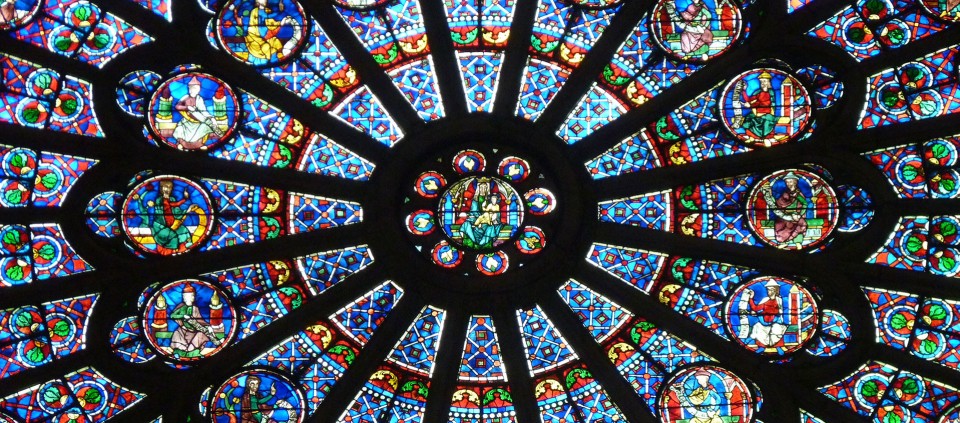On Impermanence, Loss, and Rebuilding

“To be fully alive, fully human and completely awake, is to be continually thrown out of the nest.”
—Pema Chödrön
A small robin built her nest last year in the corner ledge of the overhang shading our front porch. Each time a delivery person or a guest walked the five steps up to the front door, she would fly straight at their heads, and then away as if to distract them from her eggs. Over the course of weeks, she became agitated by the constancy of the threat and the spot proved too difficult to manage. Her eggs fell, or the nest fell—I don’t remember which—but one afternoon we noticed broken bits of shell on the ground and no evidence of babies or the mama bird. My partner and I, and perhaps the bird herself, agreed that this hadn’t been her best choice for a home. We cleaned the space and wished her well, hoping she would find quieter sanctuary in the coming year.
Just last night, she returned, dutifully laying mud bits on the corner piece of wood, and then the tiny sticks that will be the foundation of her nest. We didn’t have the heart to frighten her away; life all feels so tenuous as it is and if, maybe, this year, it goes a bit better, then we will have done her a kindness. If it doesn’t go well, she will be awakened again, as will we, to the teachings of impermanence and the guarantee that change, as awkward and shattering as it can be, is inevitable.
Anitya, one of the principle doctrines of Buddhism, contends that all of existence is transient. We are subject to a constancy of change, subject—to reference Pema once more—to things coming together and then falling apart, and then again. As the spire of the Cathedral of Notre Dame collapsed in flames on Monday night, French President Macron stated that, “… what we believe may be indestructible can be destroyed … everything, material and spiritual, is fragile.” This inconstancy brings sorrow and a sense of loss, sometimes despair, over what had been and what was supposed to be, according to our expectations. We mourn the assumed future, as well as the felt loss of the present, and for a time life’s coherence disappears. The world no longer makes sense. Who are we when what we have held onto, loved, understood, falls apart?
With our sorrow, other experiences arise. We may find ourselves triggered into memory of past losses, and projecting future worries. For years now, I have been aware that the ankles of David, Michelangelo’s masterpiece, are fractured. An earthquake in Florence or even just the right concussion of tremors may cause David to fall, bringing down one of the world’s most revered pieces of art. Watching the fire destroy so much, I thought of David; and then my friend Danny, who lost his apartment to fire when I was 20; and then, in the beat of a heart, I found myself remembering my father—French by ancestry and French Canadian by birth—who passed just two years ago. Loss, destruction, illness, betrayal … each creates a windstorm of change, linked to other storms through the turbulent emotions we find ourselves held captive by once again.
How, then, to move forward? Acceptance of our grief is the first and always best step. Allowing all that we feel and think to swirl and rise and swirl again, knowing that all emotions are valid and all thoughts, even the most difficult, are natural. After giving ourselves this permission to be human, we can then more readily and easefully begin to use our breath to calm ourselves. With each breath—whether three full, deep breaths or 10 minutes of meditation or 15 minutes of asana—we bring physiological calm, a mental and emotional quieting. Over time and with repetition, we find ourselves with a clear mind and a clear heart. From that place, we can begin to choose with wisdom the steps we are prepared to take.
We might, as with so many after the Sandy Hook Elementary School and Parkland School shootings, find ourselves driving across state lines to provide direct aid and comfort. We might choose to sit in vigil, to pray, to write, to bake, to bear witness. We might help to bury what had been or begin to dream about what could yet be; and we may choose, as so many are doing in Paris, to simply gather—knowing that we can navigate anitya’s storms a fraction more easily when we ride the waves together.
To be in life is to be thrown. To be thrown, in any way, requires of us a falling, and then a recognizing of the consequences of that fall, and then the choice to rise again. Notre Dame will be rebuilt. We also, through our awakening awareness, the kinship of others who have known suffering, and our capacity to breathe and quiet ourselves and choose life once more, can rebuild our way in the world.
Kripalu faculty member Maria Sirois, PsyD, is a positive psychologist and seminar leader who teaches internationally in the intersection of resilience and flourishing.
Find out about programs with Maria Sirois at Kripalu.
© Kripalu Center for Yoga & Health. All rights reserved. To request permission to reprint, please email editor@kripalu.org.
Maria Sirois, PsyD, is a positive psychologist and seminar leader who teaches with wisdom, authenticity, and humor at the intersection of resilience and flourishing.
Full Bio and Programs